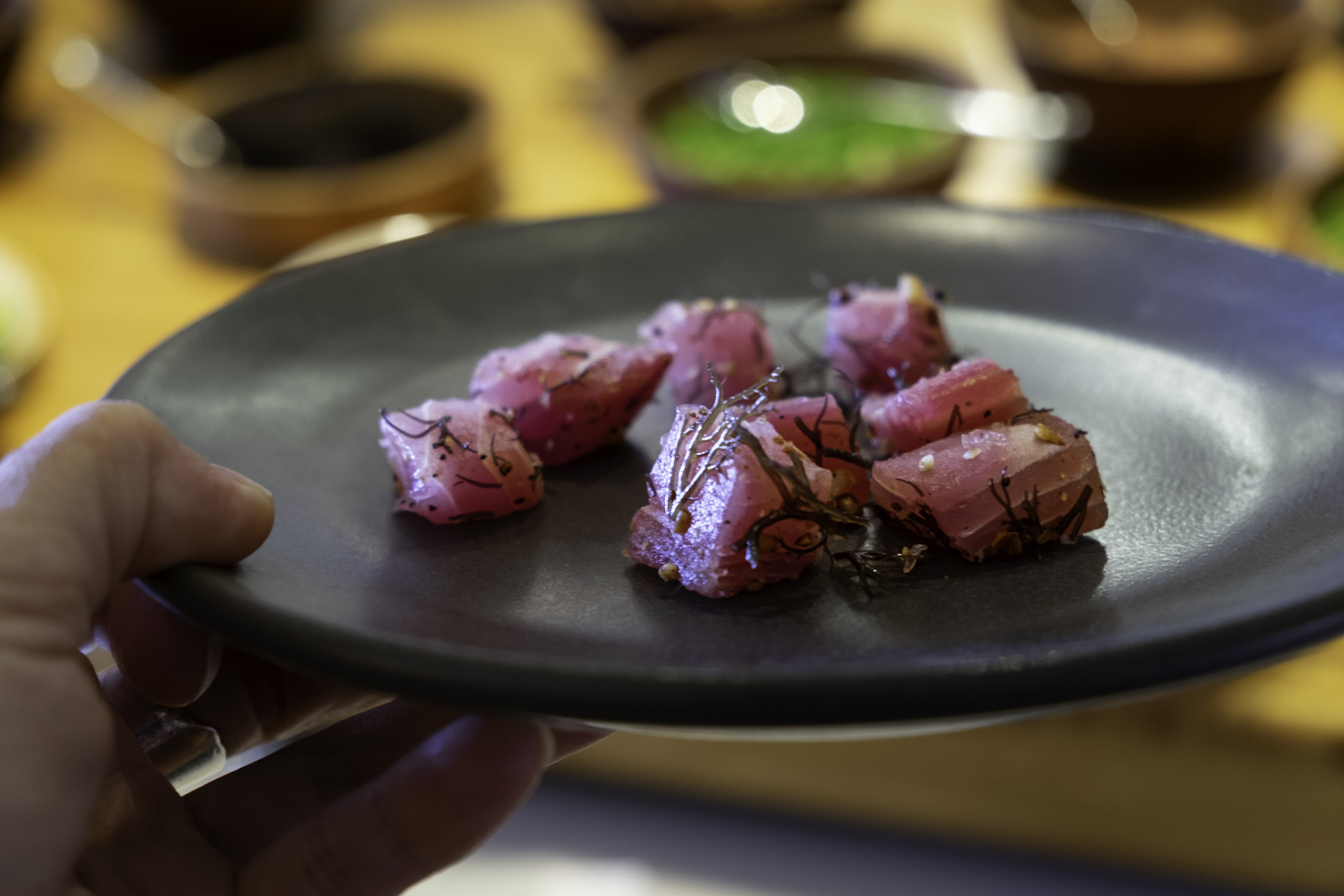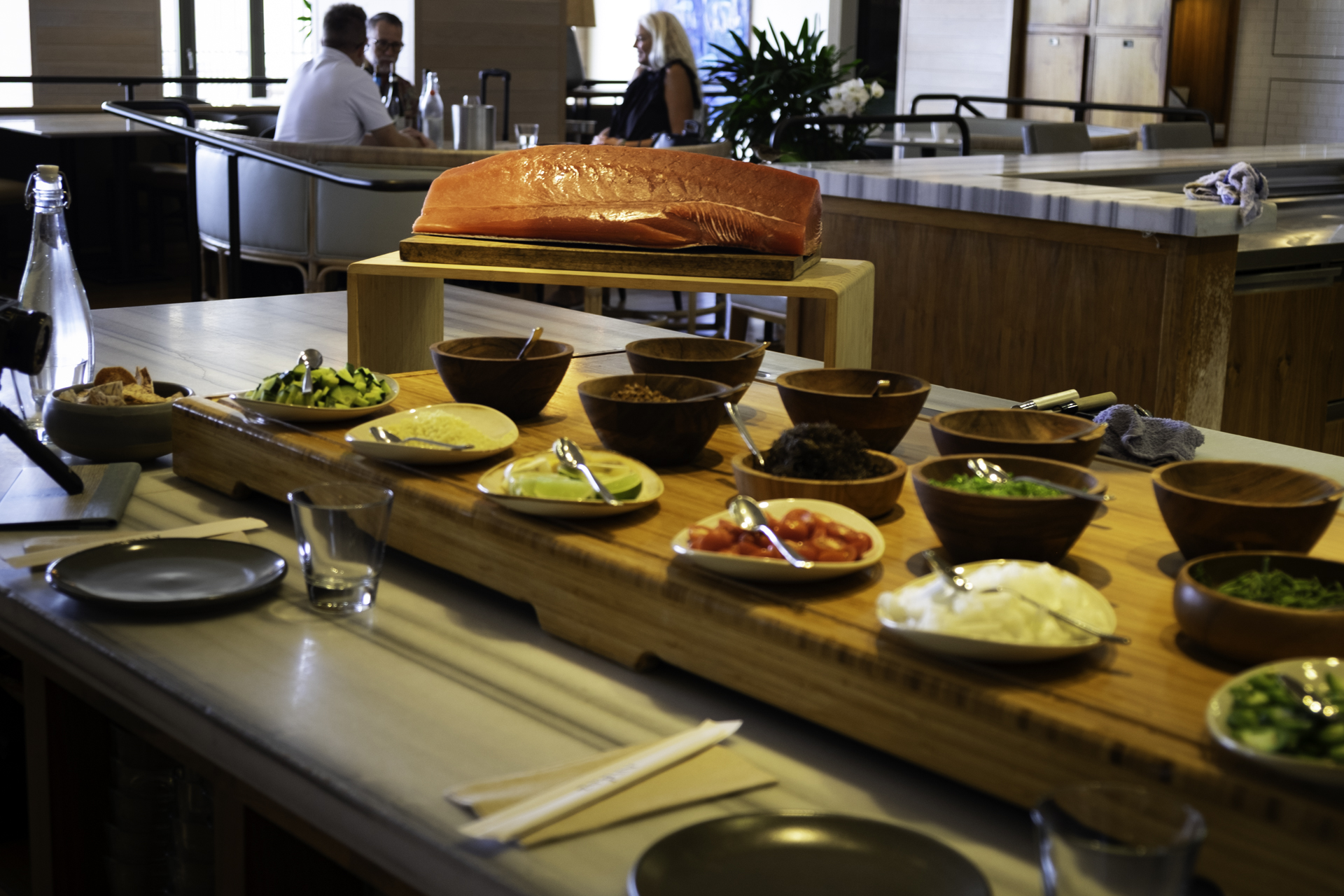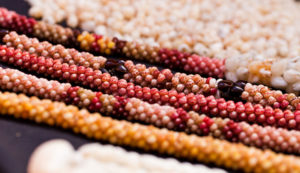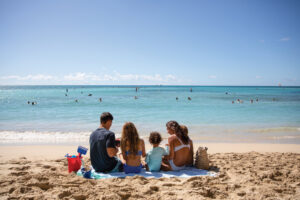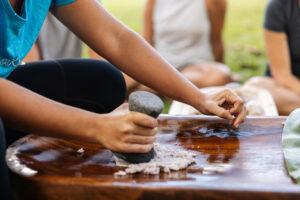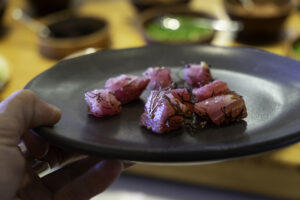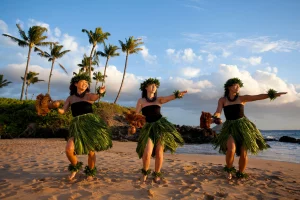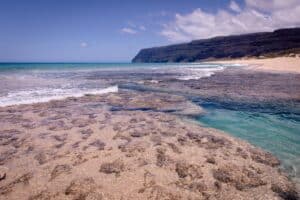There are 3,108 poke shops in the United States — more than 240 of them are in Honolulu. That’s a 22% increase since 2020, according to IBISWorld, which expects that number to grow over the next five years.
In 2016, Eater reported that the number of restaurants serving poke had doubled since 2014 — from 342 venues to 700 as of August 2016. It appears poke is here to stay.
As it should be. There’s no better beach companion than a deli cup of chilled poke and a pair of chopsticks. Poke is not only delicious — it’s healthy, versatile for most diets and easy to prepare. It also carries a rich history that many Hawaiʻi locals deeply connect with.
Poke (pronounced poh-kay) is a Hawaiian dish. Traditionally, it was made with raw fish cut into cubes, seasoned with Hawaiian salt and, perhaps, some limu and ʻinamona (ground kukui nuts). Over time, as immigrants arrived to work on sugar cane plantations, the seasonings expanded to include ingredients such as white or green onions, Hawaiian chili pepper, sesame oil and shoyu.
Today, the number of toppings you can find on a poke bowl is seemingly endless.
Although poke — which means “to slice” in Hawaiian — has become synonymous with ‘ahi, it can be made from almost anything: fish, ‘ulu (breadfruit), kalo (taro), beets, beef — you name it.
Learn How To Make Poke
At Ka‘ana Kitchen, a Hawaiʻi-inspired farm-to-table restaurant at the Andaz Maui at Wailea Resort, Chef Rhoderick Bulosan hosts a class called Poke All Around. Guests learn the history of poke while watching Bulosan break down a loin of fresh ‘ahi and dice steamed octopus. Then, each participant creates their own poke dish, choosing from a spread of toppings including locally grown cucumber, jalapeño, sea asparagus, green onion and ʻinamona.
As Bulosan prepares and serves poke, he shares stories from his upbringing on Hawaiʻi Island — memories of spear fishing octopus as a kid and of his parents working on the sugar cane plantation. All of these experiences, he says, help explain why poke looks the way it does today.
“Now, you guys remember during the sugar cane era,” Bulosan said. “A lot of ethnicities and cultures brought so many different things to Hawaiʻi. We got Koreans bringing sesame oil; sesame seeds and soy sauce from the Japanese; Chinese brought oyster sauce. So many different things, you know, from different cultures. And that’s what Hawaiʻi is known for. It’s a melting pot of all these cultures.”
Some Of Our Favorite Poke Shops in Hawaiʻi
- Foodland – Locally-owned grocery store. Multiple locations on Oʻahu, Maui, Hawaiʻi Island and Kauaʻi.
- Tamashiro Market – Honolulu, Oʻahu
- Tin Roof – Kahului, Maui
- Tanioka’s Seafood & Catering – Waipahu, Oʻahu
- Tamura’s Fine Wines & Liquor – Multiple locations on Oʻahu and Maui.
- Young’s Market – Honolulu, Oʻahu
- Kahuku Superette – Kahuku, Oʻahu
- Maguro Brother’s – Honolulu, Oʻahu
- Aliʻi Fish Market – Honolulu, Oʻahu
- Yama’s Fish Market – Honolulu, Oʻahu
- Paradise Poke – Honolulu, Oʻahu
- Off The Hook – Mānoa, Oʻahu
- Koloa Fish Market – Koloa Town, Kauaʻi
- Da Poke Shack – Kailua-Kona, Hawaiʻi Island
